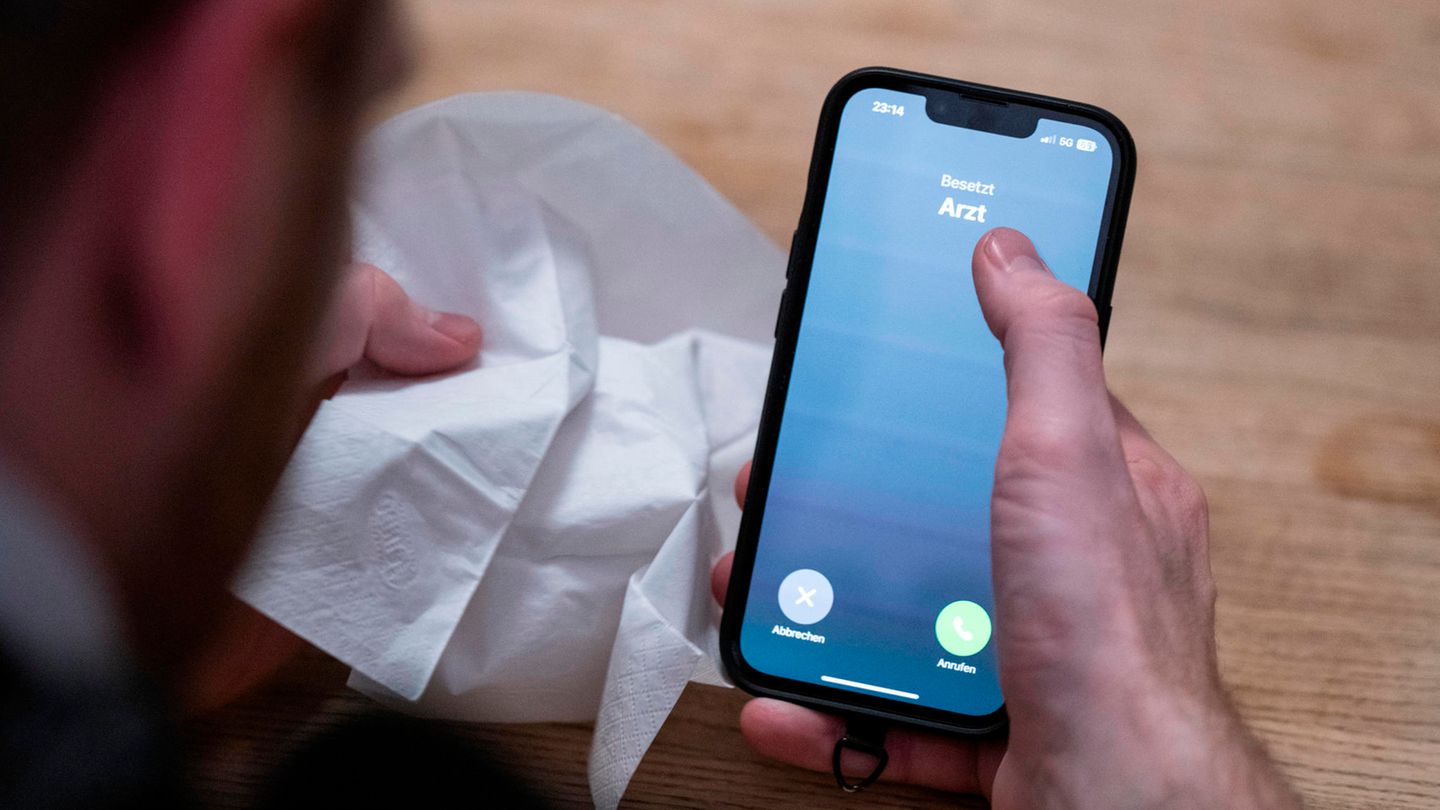There is currently coughing and sniffling everywhere in the family doctor’s waiting rooms. Anyone who only has mild symptoms and is already known to the practice will be allowed to call in sick in the future. We explain how exactly this works.
Sick leave by telephone is possible again – and can now be used permanently. The Federal Joint Committee (G-BA) for the healthcare system passed a corresponding regulation in Berlin on Thursday. Unlike during Corona times, sick leave by telephone is only possible for up to five days – and not for up to seven days. What you should know about sick leave over the telephone – an overview:
Many doctors welcome telephone sick notes as a relief. But: How many people currently have a cold and go to the doctor because of it?
The Robert Koch Institute estimates that more than seven million people currently suffer from a respiratory infection. The most important pathogens are rhinoviruses and SARS-CoV-2. However, the number of severe respiratory diseases caused by the RS virus is also increasing, especially among children under four years of age.
On the other hand, around 2,000 out of 100,000 people go to the doctor every week because of respiratory infections. This corresponds to a total of around 1.7 million doctor visits.
Who can request sick leave over the phone?
The Federal Committee announced that the regulation will apply from Thursday. Accordingly, the prerequisites are that video consultations are not possible and that patients are already known to the respective family doctor’s practice. In addition, those affected must not have any severe symptoms.
Why can you no longer get sick leave for seven days over the phone?
At the committee meeting, the umbrella association of statutory health insurance companies (GKV) spoke out against seven-day sick leave. Her representative argued that the opportunities for doctors to assess the illness over the telephone were significantly reduced. Ultimately, it is about issuing a document that must have reliable evidentiary value to the employer.
Doctors’ representatives, on the other hand, advocated a uniform regulation for tele-sick notes. They pointed out that this was already possible for seven days with the existing video sick note.
How does the electronic certificate of incapacity for work (eAU) work?
Employees are legally obliged to report sick to their superiors or the human resources department from the first day (before starting work), and from the fourth day of sickness they must also have a doctor’s certificate.
But the famous “yellow slip” has been history since the beginning of the year: As of January 1, 2023, employers had to switch to data exchange for electronic certificates of incapacity for work (eAU), and some medical practices had already introduced the procedure in 2022.
When you visit the doctor, the doctor sends an electronic certificate of incapacity for work to the insured person’s health insurance company. Employers, in turn, are obliged to retrieve this data from the cash registers using special software.
And be careful: an eAU is only legally required from the fourth day, but every company has the right to request a certificate from the first day.
How often do Germans take sick leave?
Current data is available from the Techniker Krankenkasse, for example. Statistically speaking, every employed person there was on sick leave for around 9.5 days in the first half of 2023 – a new high. In the first half of 2022 there was an average of 9.1 days. In previous years, the values for the first half of the year were significantly lower (2021: 6.8 days of absence; 2020: 8.0; 2019: 7.8). There are similar figures from other health insurance companies. Experts believe that the reason for the increasing number of days of absence is, among other things, increased sensitivity among employees. They may be staying at home today so as not to infect their colleagues.
What are the most common diagnoses?
The main reason for sick leave is flu and colds such as a runny nose and bronchitis. On average, they accounted for 2.5 of the TC sick days. In second place in the first half of 2023 were sick notes due to psychological diagnoses – with an average of 1.74 days missed per person. Musculoskeletal disorders such as back pain accounted for 1.36 days of absence.
How are telephone sick notes received by the population?
It’s not just doctors who are positive about the possibility. The opinion research institute Yougov surveyed 3,755 people aged 18 and over on November 29th. Result: Around two thirds (67 percent) would tend to be in favor of telephone sick notes. A good 34 percent would be “completely” in favor of it, another 33 percent would be “somewhat” in favor of it. Only around 20 percent said they would somewhat or completely reject the option.
Sources: , , with material from AFP
Source: Stern
I’m Caroline, a journalist and author for 24 Hours Worlds. I specialize in health-related news and stories, bringing real-world impact to readers across the globe. With my experience in journalism and writing in both print and online formats, I strive to provide reliable information that resonates with audiences from all walks of life.




